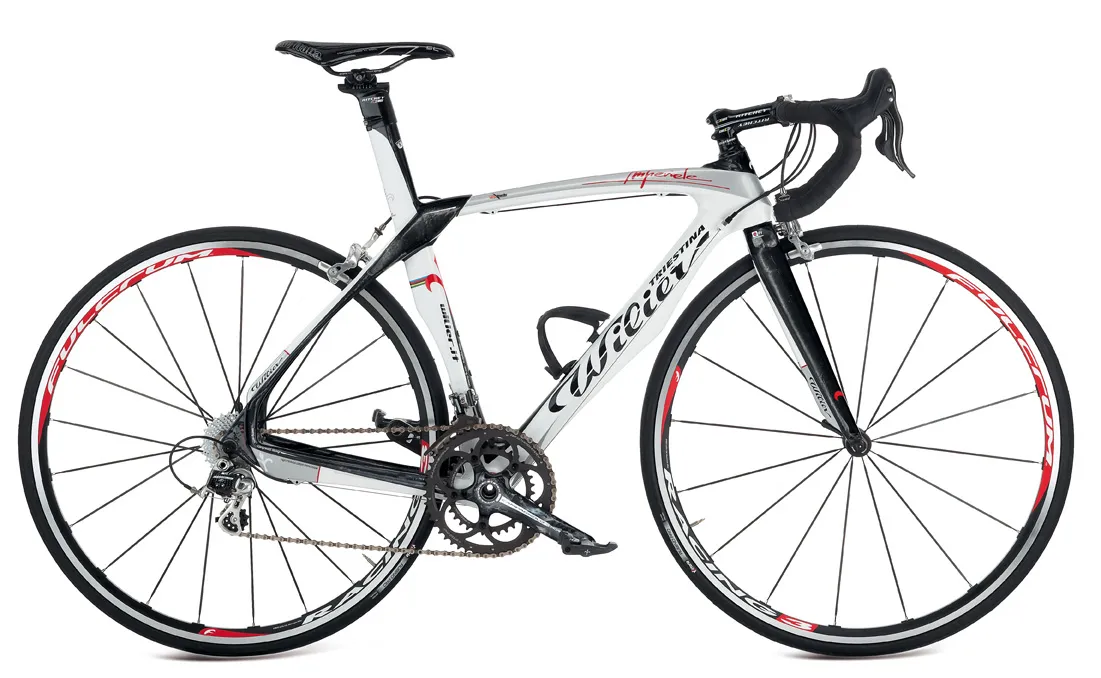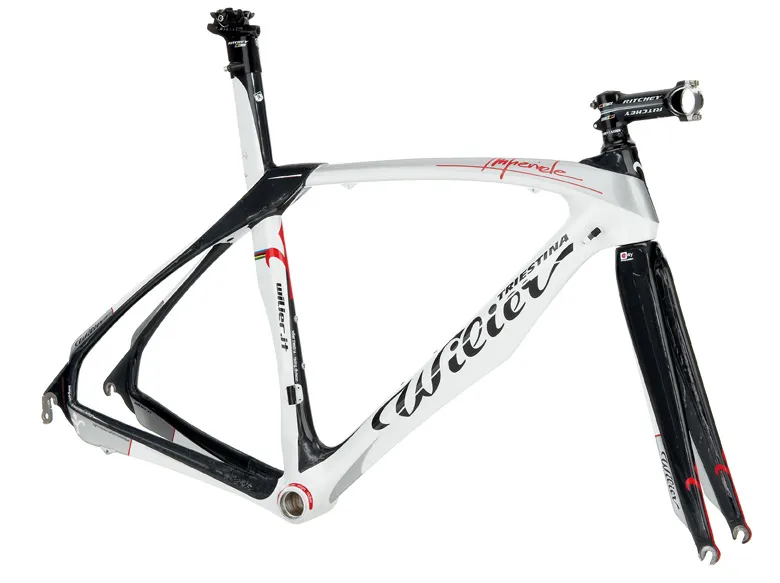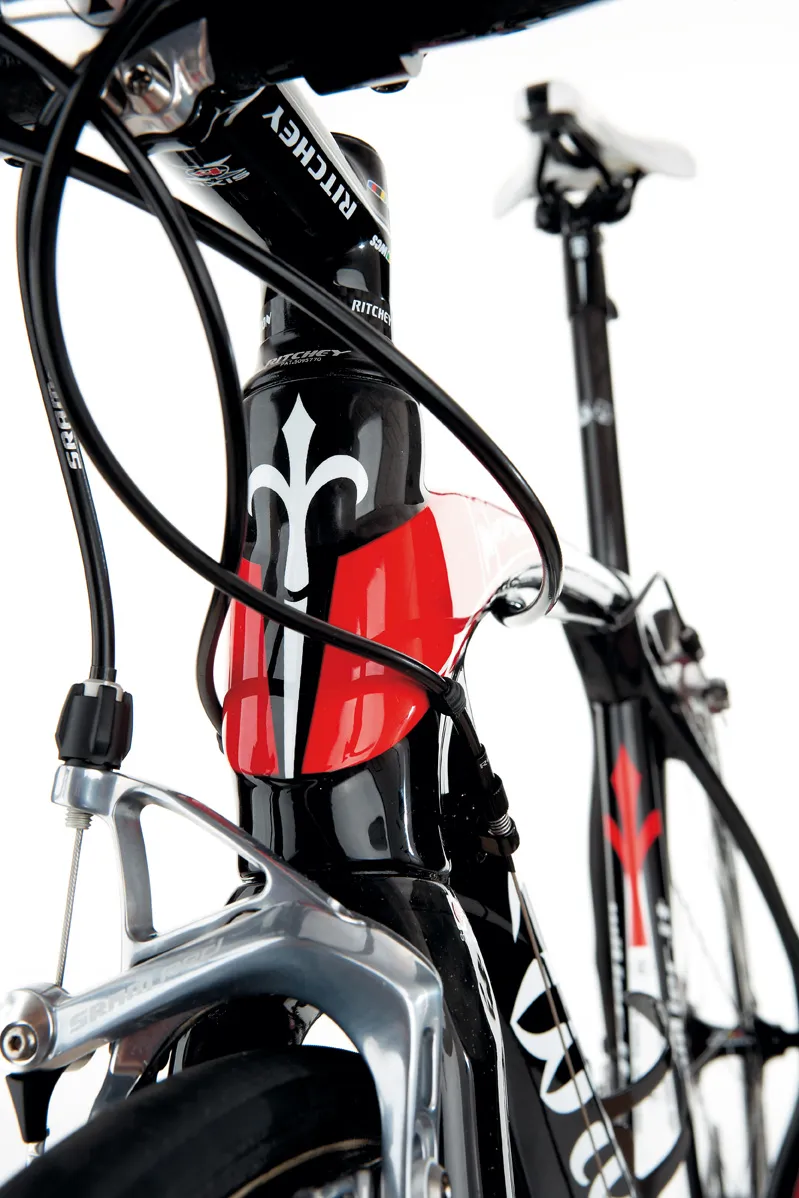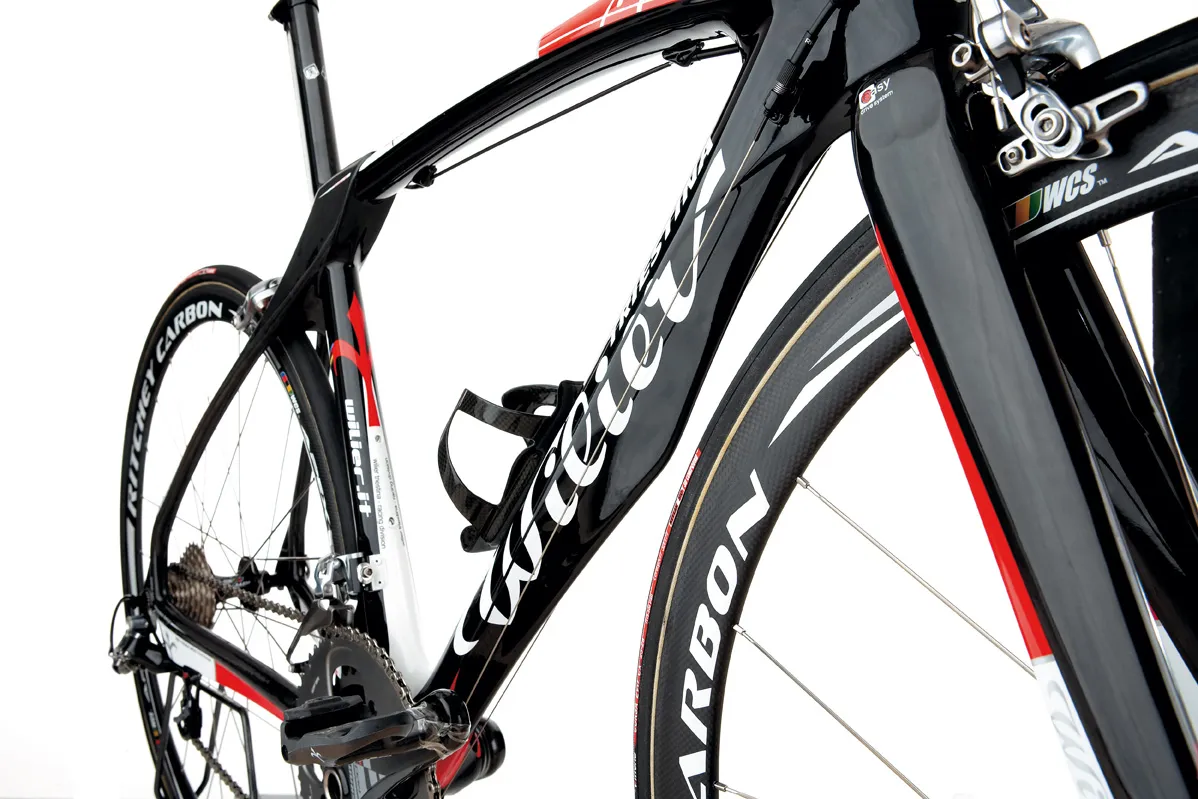At first glance, the 2010 Wilier Imperiale carbon aero road frameset looks like the offspring of a Seven Diamas and Felt AR, but the closer you get, the quicker you realise the Imperiale is a different bird entirely.
The original Imperiale, introduced in 2003, was a full-carbon Colnago lookalike. The 2010 model reflects the dramatic evolution creeping through the peloton, with a heavy emphasis on squeezing speed from multi-shaped carbon tubing.
Up front, the head tube is shaped to reduce wind drag with a slightly minimalist nose-cone. The bulk of the Imperiale's shape was inspired by a hybrid of the company's Tri-Crono time trial bike and popular Cento 1. It also helped to have aerodynamics expert John Cobb along for the ride, as he was for the Tri-Crono.
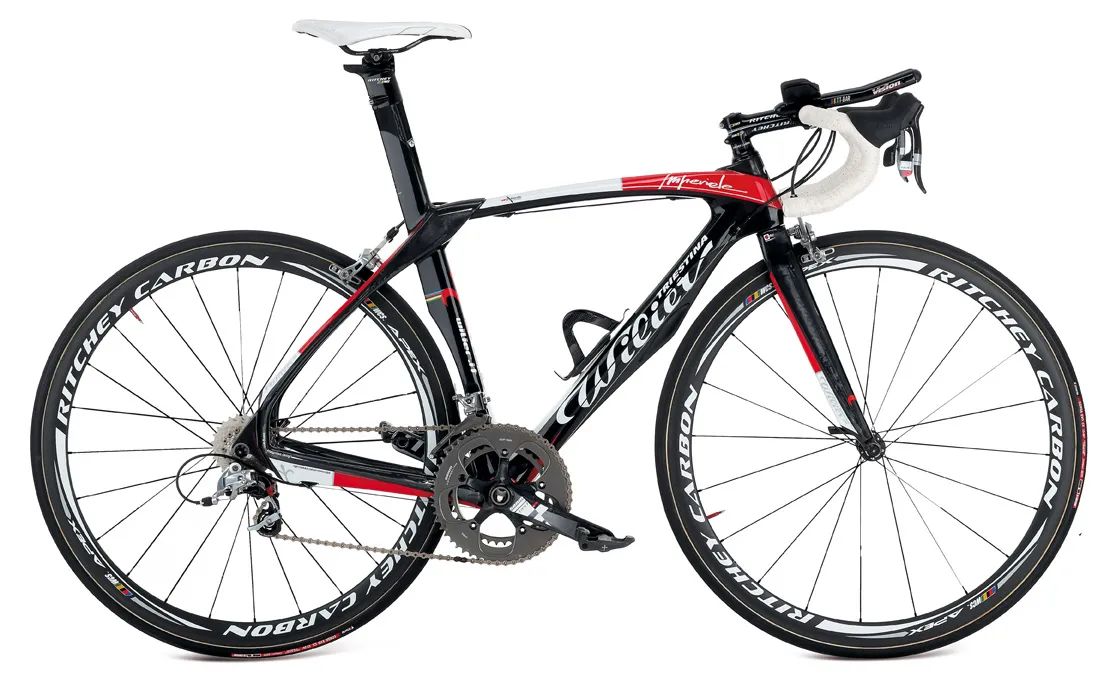
With wind tunnel testing becoming standard practice among bike manufacturers, it's no wonder the Imperiale's radical tube shaping – both in the lower fork blades and chainstays – stands out, even among the Ridleys, Cervelos, and Felts (coincidentally, Cobb had a hand in some development work with Ridley).
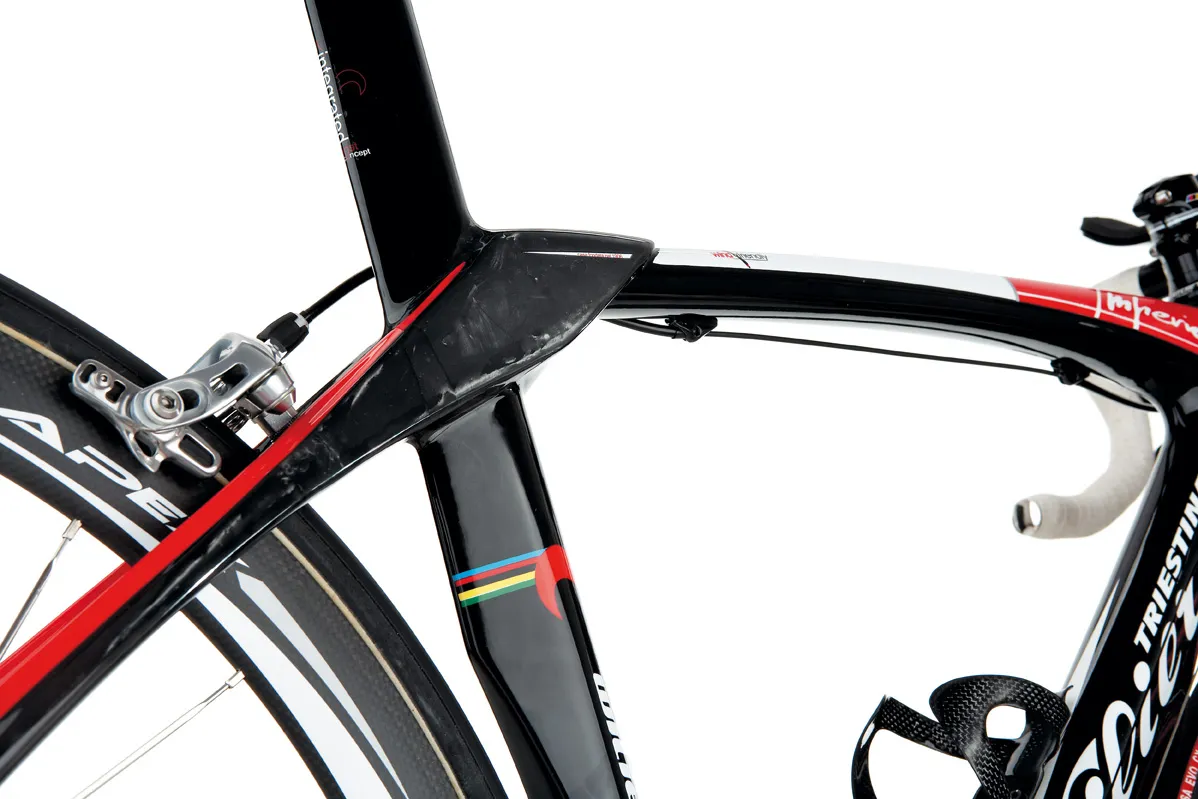
In the rear, two monocoque elements contribute to stability and aerodynamics on the exit stages of wind drag: seatstays are joined in what can best be described as a top tube shroud, directing airflow around and past the rear wheel.
Down below, the chainstays are joined to the underside of the bottom bracket, forming what Wilier call "splitters". An integrated seat tube and seat cap top off the seating arrangements.
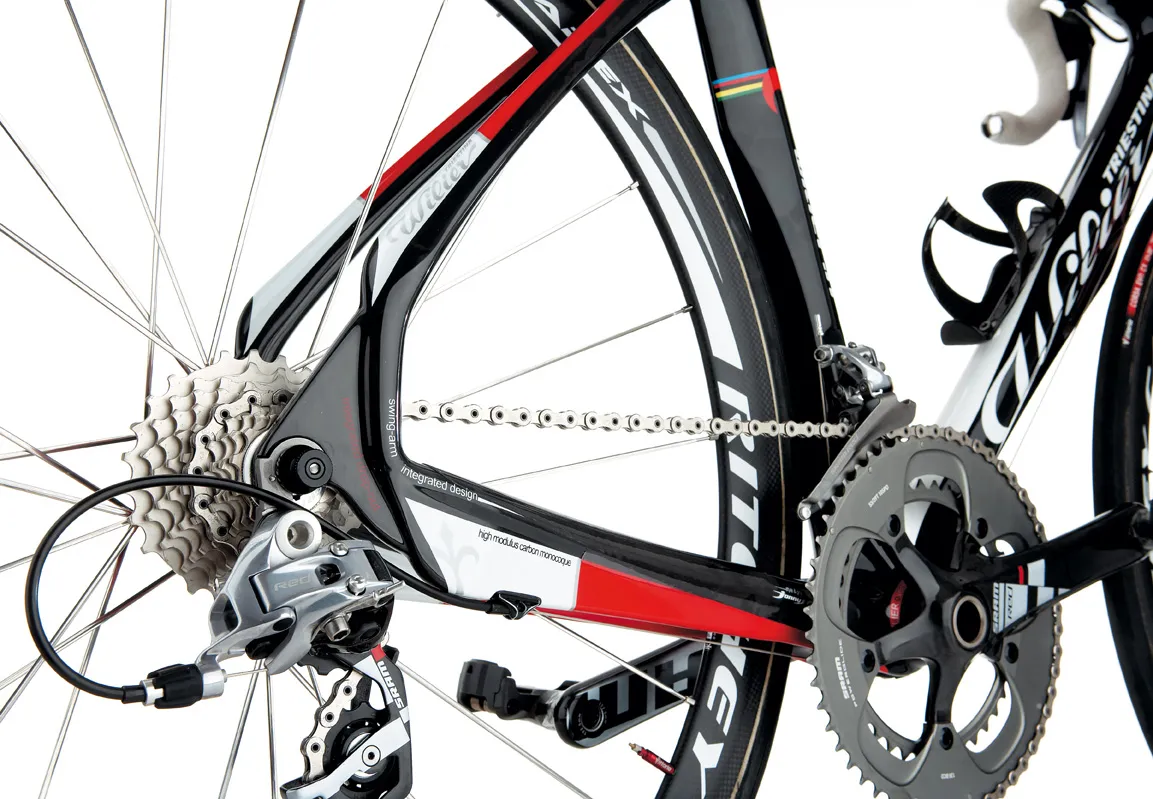
All told, the reported 1,130g frame and 360g fork make for an interesting moveable feast for the eyes. Time will tell how it performs in real-world conditions, but with ProTour teams like Lampre and our Procycling magazine test monkeys, we're sure to get some feedback later this year for sure.
Wilier USA will offer the Imperiale with a Shimano Ultegra 6700 gruppo, Fulcrum R5 wheelset and Ritchey Pro bars and stem for US$3,899 in early to mid November 2009. Frameset price is US$2,899.
